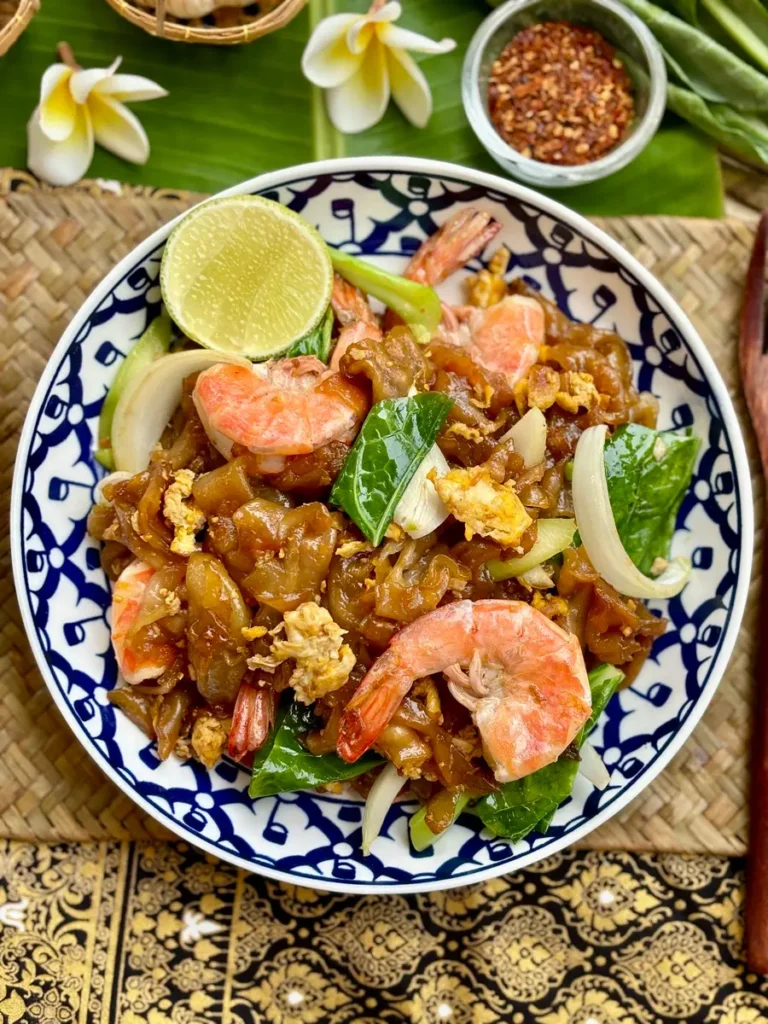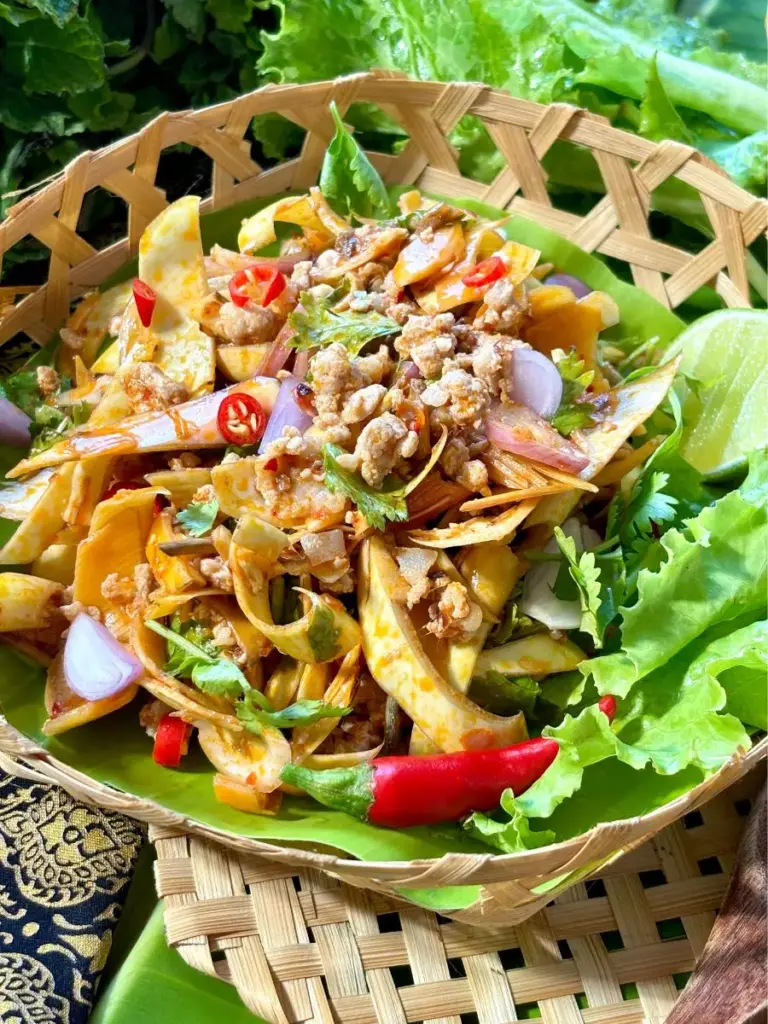Learn the differences between pad kee mao vs pad see ew, two popular Thai noodle dishes you need to try. Discover how they differ in flavor, preparation, and ingredients.

Tip: Don’t forget to check out my recipes for pad kee mao and pad see ew once you’ve picked your favorite!
Key differences
| Pad Kee Mao | Pad See Ew | |
| Noodles | Fresh wide rice noodles or instant noodles | Fresh wide rice noodles or thin rice vermicelli |
| Key Ingredients | Garlic, chilies, holy basil, mixed vegetables | Garlic, chilies, Chinese broccoli |
| Flavor | Bold, savory, and spicy | Mild, savory, and sweet |
| Protein | Meat, seafood, or vegetarian | Meat, seafood, or vegetarian |
About pad see ew
Noodles: Pad see ew traditionally uses wide, flat rice noodles called sen yai. These fresh noodles are chewy and slippery, perfect for soaking up the sweet and savory soy-based sauce.
It can also be made with thin rice vermicelli (sen mee), like in my version of sen mee pad see ew.

Flavor and sauces: Pad see ew is popular for its balance of sweet and savory, with dark soy sauce playing an important role. Not only does it darken the noodles, but it also adds depth to the flavor.
One of the key characteristics of this dish is the subtle smokiness from the noodles, which get slightly caramelized during the high-heat stir-fry.

Vegetables: Pad see ew always includes Chinese broccoli (gai lan), garlic, and sometimes onion, adding crunch and a slight bitterness to balance the sweet sauce.
Proteins: Both dishes can use any protein you like; pork, chicken, beef, shrimp, tofu, or even mixed seafood all work well.
We served pad see ew daily in my Thai restaurant, and it was most popular with chicken!
About pad kee mao (drunken noodles)
Noodles: Pad kee mao usually uses wide fresh rice noodles. But if you don’t have those on hand, thinner rice noodles like the kind used in pad Thai also work well.
In Thailand, you’ll also find mama pad kee mao (มาม่าผัดขี้เมา), made with Mama brand noodles. Try my unique variation using spaghetti!

Flavors and sauces: Pad kee mao is popular for its bold, spicy, and aromatic flavor profile.
The intense taste comes from a combination of soy sauce, oyster sauce, fish sauce, fresh chilies, garlic, crushed peppercorns, and holy basil. Together, these ingredients create a dish that’s fiery, fragrant, and full of flavor.

Vegetables: Pad kee mao is stir-fried with mixed vegetables like baby corn and carrots, but the must-haves are holy basil, black peppercorns, and fresh chilies.
Fun fact: Did you know that in Thailand, drunken noodles are often considered the perfect hangover cure? Its bold, spicy flavors and comforting warmth are exactly the kind of Thai stir-fried noodle dish we crave after a night out.
Frequently asked questions
Can I make either vegetarian?
Yes! Both dishes work well with tofu. Just skip the fish sauce and oyster sauce, replace them with soy sauce or a vegan stir-fry sauce.
Which one is better for kids or people who don’t like spicy food?
Pad see ew is the better choice—it’s sweet, savory, and mild. Drunken noodles are more intense and spicy, so it might be too much for younger or more sensitive eaters.
Which dish is spicier?
Pad kee mao is definitely spicier; it’s made with fresh chilies and holy basil. Pad see ew is much milder and doesn’t usually contain any chili unless added at the table.
More Thai noodle comparisons
Conclusion
Now that you know the difference between pad see ew and pad kee mao, what’s your favorite? Share it in the comments and don’t forget to follow me on social media: Facebook, Instagram, and Pinterest!







I love it all but my favorite is pad kee mao.
Do you have a cook book?
Hey Randy! I don’t have a cook book at this time, sorry. The blog is updated regularly with free recipes though!